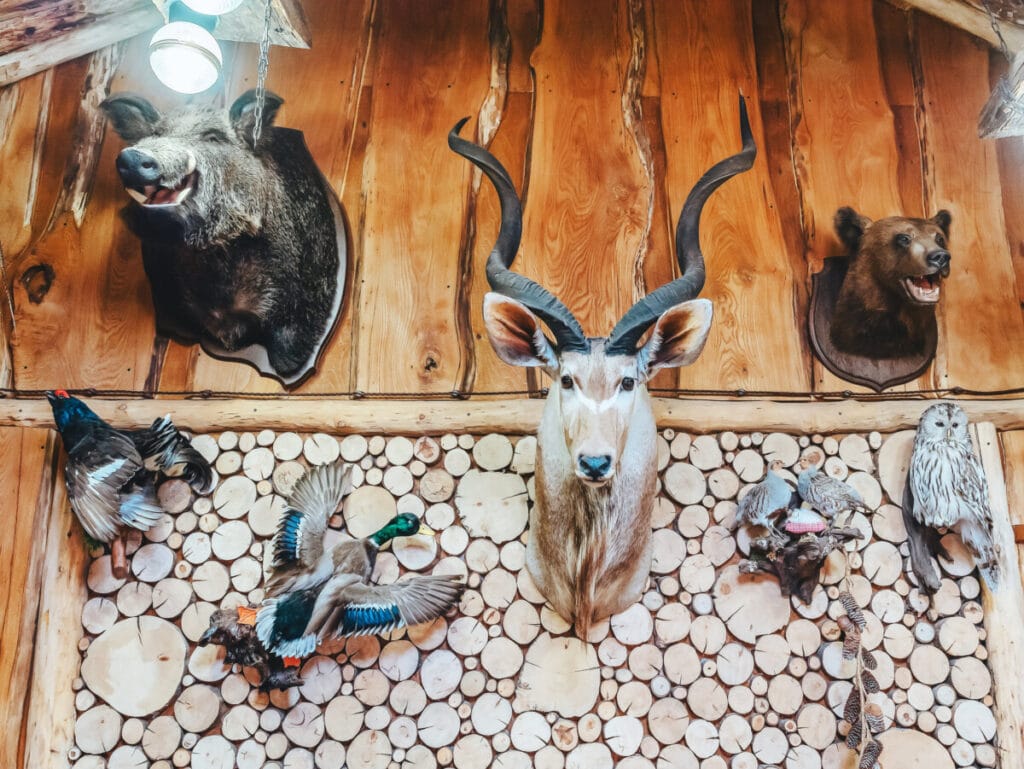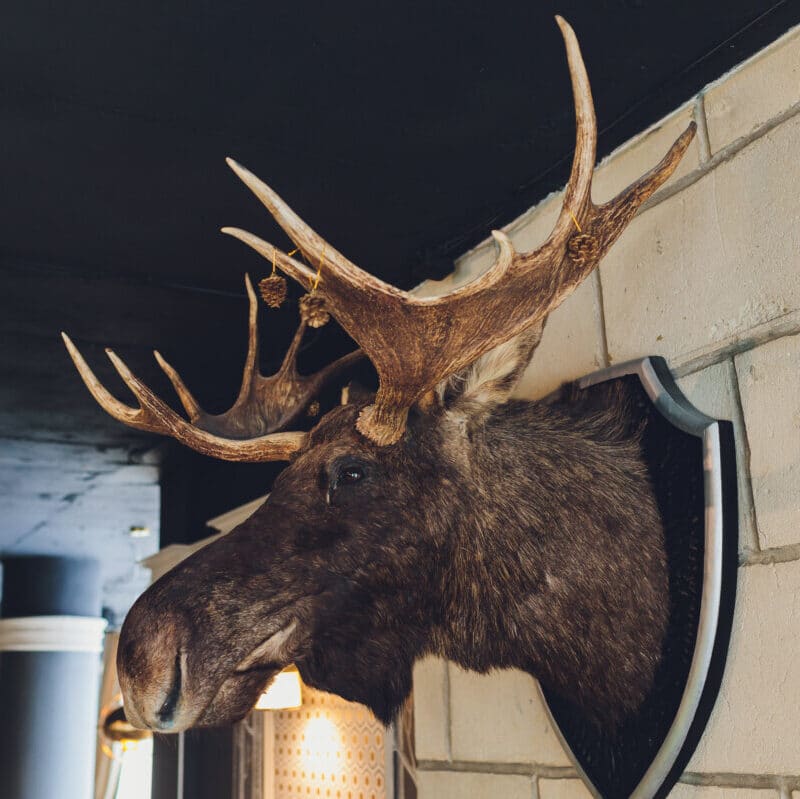How Long Does Taxidermy Last on Average?

Taxidermy trophy mounts are so much more than home decor. They represent countless hours of outdoor scouting, skill, and memories. You can extend the life of your taxidermy through proper care.
Taxidermy lasts for 20 years on average if not maintained. However, if it is maintained properly, it can remain in pristine condition for 50 years or more. Factors that reduce the life of taxidermy include extreme temperatures, humidity, exposure to light, bugs, and human touch.
As a taxidermy owner, it is important to understand how to create optimal conditions for your animal display and how to protect your investment.
What Happens to Taxidermy Over Time
The outer surface of a taxidermy mount is made of organic material so naturally, this part of the mount will start to deteriorate over time. The purpose of taxidermy is to preserve those organic materials, but if a taxidermy mount is left uncared for, it will show dramatic deterioration in about 20 years or less.
Some of the common signs of deterioration are hair or fur shedding, sagging/drooping, fading or bleaching, fragility, brittle texture, visible molded form, and loss of detail.
Some taxidermy animals may not last as long as others. Birds and fowl, for example, have very small bones and other features that could easily be damaged and start to droop over time. Animals like rabbits and snakes have very thin skin that could easily crack or tear after a few years if not cared for properly. (Source)
This being said, all taxidermy has the potential to last decades if the taxidermist did a quality job and the owner did proper maintenance and care over the years.
Optimal Conditions For Taxidermy

It is important to display your taxidermy mount in a location that will preserve its life. Experts recommend considering the following factors before deciding where to place your mount:
- Keep your taxidermy in a temperature-controlled location (between 60 and 80 degrees Fahrenheit is recommended). Your home probably stays in this temperature range, but a cabin that you only visit a few times a year might present a less than ideal environment. A mount hung near or above a fireplace or other heat sources might not last as long.
- Humidity levels should not exceed 60 percent. If you live in a very humid place, you might want to invest in a dehumidifier.
- Choose a spot where your taxidermy will be out of direct sunlight. Sunlight will quickly fade or bleach the color. 50-100 LUX is the recommended light exposure range.
- Some display areas might be more susceptible to bugs and other animals (like a garage or a shop). Your mount will last longer if stored indoors.
- Do not let anyone touch your taxidermy mounts. The oils can make hair or fur shed and fall out.
- Keep taxidermy out the reach of pets as they might be attracted to the look or smell of the animal display. Kids can also damage taxidermy and could pull out hair or feathers.
- If you smoke in your home, your trophy mounts will likely collect a thin film of soot, which will make your animals look dull and lifeless. Soot cannot be easily cleaned off like dust.
- If possible, protect your taxidermy with a glass display case (this will help ensure all of the above recommendations are done).
Caring for Taxidermy
A taxidermied animal is not something you can just hang on the wall and forget about. You have to take care of it so it lasts as long as possible.
Pre-Taxidermy Care
The life of your taxidermy piece begins as soon as you make the kill in a hunt. If you bring your taxidermist a damaged animal skin, it will not look as good after being taxidermied or last as long.
Never cut the animal’s throat. This is not the proper way to kill an animal and will not look nice when mounted. If possible, avoid dragging the animal — this could result in bare spots and tears in the skin. If you are caping and skinning the deer yourself, make sure to leave the skin long enough (well behind the front legs). When transporting the hide, don’t leave it rolled up, and keep it as clean and dry as you can.
Regular Taxidermy Maintenance

Dusting at least once a month is a key to preserving taxidermy. A clean feather duster works fine, but to avoid any friction on the surface of the animal, you can use a hairdryer. Set the hair dryer to the lowest heat and power settings to gently blow away any debris and dust.
Never use any household cleaning products or water on the piece. Ask your taxidermist to apply a dust shield spray to your mount which will make dusting it much easier.
If for some reason you need to do a deeper cleaning, use a clean, dry, or slightly damp cotton ball. Lightly brush in the direction of the grain of fur, hair, or feathers. Get a new cotton ball once dirt is visible on the cotton ball.
A damp cloth can be used to shine the eyes and dry areas like antlers. Use a Q-tip to apply a small amount of petroleum jelly around the eyes and on the nose. This will keep these areas from drying out and bring a life-like shine.
Restoring Taxidermy
Taxidermy that is already in poor shape may need more help than a light cleaning. Consider taking the piece to a taxidermist for restoration. They would be able to reattach broken parts, touch up paint (like the lips or nose), and clean heavy dust, all of which require special tools and expertise.
Conclusion
Treat your taxidermy pieces as if they were original artwork because they are! Taxidermy is the purest form of natural history and each animal tells a story. Each taxidermy mount is one of a kind, and once it is damaged, it will never look the same.
It is important that you care for the animal immediately after harvesting it and while it is on display. This allows you to preserve the beauty of its life, and the excitement of your hunt for many years. Take the time now to maintain your trophy mounts and you are sure to be telling tales of your adventures for decades to come.
